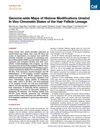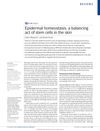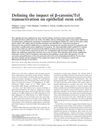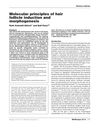In Vivo Transcriptional Governance of Hair Follicle Stem Cells by Canonical Wnt Regulators
January 2014
in “
Nature Cell Biology
”
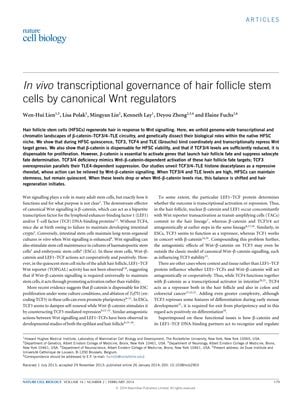
TLDR Wnt signaling controls whether hair follicle stem cells stay inactive or regenerate hair.
The document from 2014 presents a study on the role of Wnt signaling in hair follicle stem cells (HFSCs) and their ability to regenerate hair. The researchers found that the transcription factors TCF3 and TCF4, along with TLE proteins, act as repressors of Wnt target genes, maintaining HFSCs in a quiescent state. β-catenin, while not necessary for HFSC viability or proliferation, is essential for activating genes that determine hair follicle fate and for suppressing sebocyte fate. The study showed that manipulating TCF3/4 levels can mimic or suppress Wnt-β-catenin signaling, affecting hair regeneration. In vivo experiments with genetically modified mice demonstrated that β-catenin-deficient HFSCs could proliferate but differentiated into sebocytes rather than hair follicle cells. The study used various techniques, including RNA-seq, qPCR, ChIP-seq, and in vivo experiments, with some experiments replicated 2 to 5 times. The findings suggest that TCF3/4 levels are key in determining whether HFSCs remain quiescent or commit to tissue generation, highlighting the complex regulatory mechanisms governing HFSC activation and the potential for manipulating these pathways to control hair growth. The number of mice used in each experiment was not specified.
